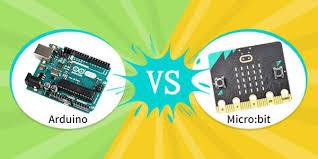
Micro:bit vs Arduino: Choosing the Right Platform for Your Project
Introduction: Choosing the right development platform is crucial for the success of your project, especially in the world of electronics and programming. Two popular choices among makers, hobbyists, and educators are the micro: bit and Arduino. In this article, we’ll explore the differences between these two platforms to help you make an informed decision based on your project requirements.
Micro:bit: Micro: bit is a pocket-sized computer designed to introduce children to coding and electronics. Developed by the BBC, it features a microcontroller, LED display, buttons, sensors, and a variety of input/output options. Micro: bit is programmed using a block-based programming language similar to Scratch, making it easy for beginners to get started. Its low cost and simplicity make it ideal for educational purposes and prototyping.
Learn more about Micro:bit: micro:bit website
Arduino: Arduino is an open-source electronics platform based on easy-to-use hardware and software. It consists of a microcontroller board and a development environment for writing and uploading code. Arduino boards come in various shapes and sizes, offering flexibility for different projects. Arduino uses a simplified version of C/C++ programming language, providing more control and flexibility compared to block-based languages. It’s widely used in DIY projects, IoT applications, and professional prototyping.
Learn more about Arduino: Arduino website
Differences:
- Programming Language:
- Micro:bit: Uses a block-based programming language, which is beginner-friendly and visually intuitive.
- Arduino: Utilizes a simplified version of C/C++ programming language, offering more control and flexibility but with a steeper learning curve.
- Hardware:
- Micro:bit: Comes with built-in sensors, LED display, buttons, and edge connectors for expansion.
- Arduino: Requires additional shields or modules for specific functionalities like Wi-Fi, Bluetooth, or sensors.
- Community and Support:
- Micro:bit: Supported by a vibrant community of educators, makers, and developers, with extensive online resources and tutorials.
- Arduino: Has a massive community worldwide, with countless projects, forums, and libraries available for support and inspiration.
- Cost:
- Micro:bit: Relatively inexpensive, making it accessible for educational purposes and prototyping.
- Arduino: Cost varies depending on the board and additional components required for the project.
Conclusion: Both micro: bit and Arduino offer unique advantages depending on your project requirements and skill level. If you’re looking for a beginner-friendly platform with a focus on education and simplicity, micro: bit is an excellent choice. On the other hand, if you need more control, flexibility, and a wider range of hardware options, Arduino might be the better option. Ultimately, the choice between micro: bit and Arduino depends on your specific needs, preferences, and level of expertise.
So, whether you’re a student, educator, hobbyist, or professional, both micro: bit and Arduino provide powerful tools for bringing your ideas to life in the world of electronics and programming. Choose wisely, and happy making!


Leave a Reply